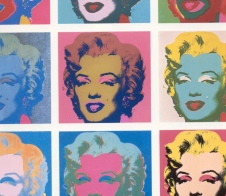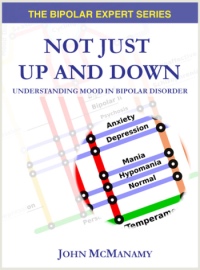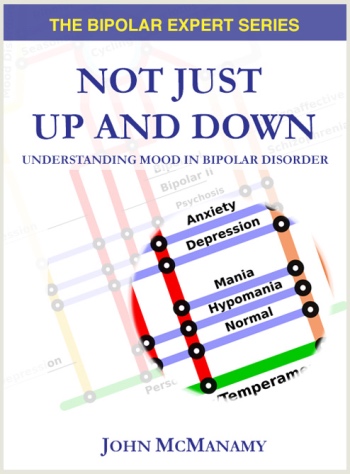A Nobel's Life - Eric Kandel
 |
With his lab partner, the humble sea snail, he cracked open the neuron.
|

Famous psychiatrists. At five in the morning in October 2000, Denise Kandel fielded a call from Sweden. She didn’t understand what the person was saying except for the last word, "Stockholm." Then the realization dawned. The Nobel committee was on the line, with news for her husband Eric.
Rewind the clock to 62 years before. This time the sound in the middle of the night was that of the breaking glass of shop windows of Jewish businesses. The infamous Kristallnacht was raging across Germany and Nazi-occupied Austria. In Vienna, thugs burst into the Kandel’s apartment and forced young Eric and his brother and parents out into the street. The family returned a week or so later to find their home ransacked and all their valuables gone.
Eric Kandel - Formative Years
Young Eric and his brother were fortunate enough to find refuge in Brooklyn, months before World War II broke out. His parents got out with mere days to spare. The memory of that night and the horrors of a year under Nazi rule carried a profound impact.
My New Book!

Purchase now.
"How could a highly educated and cultured society, a society that at one historical moment nourished the music of Haydn, Mozart, and Beethoven, in the next historical moment sink into barbarism?" Dr Kandel wrote in his Nobel autobiography many years later.
It was a question he took up in his undergraduate pursuits at Harvard. To continue his quest, he decided that psychoanalysis – the intellectual rage of the 1950s - was "perhaps the only approach, to understanding the mind, including the irrational nature of motivation and unconscious and conscious memory."
But a funny thing happened in his last year as a medical student at NYU. He decided to take an elective course in neurobiology at Columbia University. That led to a recommendation to join the NIMH as a postdoctoral fellow in the lab of the legendary Wade Marshall, who had mapped out the sensory system in the brain. Suddenly, psychoanalysis seemed like an artifact of an earlier age. The searing questions forged from his childhood in Vienna now found a new medium in modern biology.
"I am struck," he wrote, "as others have been, at how deeply these traumatic events of my childhood became burned into memory."
During his three years at the NIMH, Dr Kandel began his lifelong quest into the biological mechanism of the memory. With colleague Alden Spencer MD, Dr Kandel published a series of articles in the early 1960s documenting their discoveries of the cellular properties of hippocampal neurons. But the two researchers realized these findings alone could not account for how memory was stored. Instead, they began to look into how the neurons were functionally connected. But they needed a simpler place to start than the hippocampus. Dr Spencer turned to the spinal column while Dr Kandel hitched his star to the humble sea snail.
Dr Kandel’s mentors at the NIMH strongly discouraged him from taking such a radically reductionist approach to a complex biological process. Nothing interesting, they argued, could be found in a mere invertebrate, much less have application to higher life forms. But Dr Kandel was young and brash. After ruling out crayfish, lobster, flies, and the nematode, among others, Dr Kandel arrived at the aplysia, a giant marine snail. The animal’s small number of extraordinarily large and distinctively pigmented nerve cells conferred the advantage of easy observation and experimentation.
After completing a two-year psychiatric residency at Harvard, Dr Kandel headed off to Paris for a 16-month tutelage under Ladislav Tauc, one of only two people in the world working on the aplysia. Their collaboration led to a series of articles from the early to mid-1960s. But this was only the beginning.
Educating Aplysia
Following a brief stint at Harvard as a staff psychiatrist, Dr Kandel joined NYU in 1965 to start a new neurophysiology group devoted to the neurobiology of behavior. In France, Dr Kandel had discovered that chemical synapses are remarkably plastic, but had yet to establish that these changes occur when an animal learns something. But how can you tell when a snail has learned something? One giveaway is that snails reflexively withdraw their gills in response to stimuli administered to the animal’s spout (siphon), an action similar to removing one’s hand from a hot object.
As with higher animals, practice makes perfect; repeated stimuli convert short-term memory to long-term memory. The team focused initially on sensitization, a form of learned fear. A person sensitized to the sound of gunfire, for instance, may become startled by a mere tap on the shoulder. A snail sensitized to stimuli to the siphon would also respond to stimuli to the tail. The conversion of short-term memory to long-term memory resulted in the synthesis of new proteins.
The team located and mapped the neural circuit in the gill-withdrawal reflex. To the researchers’ surprise, the cells and their interconnections were always the same. What changed in the learning process were changes in synaptic strength. The cell circuits may have been hardwired, but the effectiveness of their signaling could be altered by experience. These findings led to a series of ground-breaking articles published in Science in 1970.
In 1974, Dr Kandel moved to Columbia as the founding director of the Center for Neurobiology and Behavior (and later as senior investigator of the Howard Hughes Medical Institute which has a site located there). There, he and his colleagues (many recruited from his NYU group) zeroed in on the fine points of synaptic change. This involves serotonin and other neurotransmitters acting on specific receptors located on presynaptic neurons.
The serotonin, Dr Kandel found, increases a "second messenger" molecule, cAMP, inside the neuron that sets in train the sensitization required to form short-term memory. Collaboration with Paul Greengard PhD, who would share the same stage in Stockholm with Dr Kandel, implicated the enzyme PKA in the process, along with a potassium channel regulated by PKA. Reducing the potassium current has the effect of ramping up calcium, which sends neurotransmitters on their merry little ways.
By now Dr Kandel and his team had perfected the art of experimenting on cell cultures grown from the larvae of their snails - in this case just two cells, a sensory neuron and a motor neuron. All the researchers had to do to simulate the tail stimulus effect of the snail was to "puff" micro units of serotonin into the culture. This was about as reductionist as even Dr Kandel could get.
This time Dr Kandel and his colleagues were hot on the trail of long-term memory. Repeated administration of serotonin, they found, activates PKA inside the cell. In response, PKA translocates to the nucleus where it recruits another enzyme called MAP kinase. Both kinases act on a gene regulator called CREB-1, which triggers the synthesis of new proteins (CREB) needed for the growth of new synaptic connections vital to long-term memory.
These and other findings were gradually revealed over a steady stream of articles spanning into this millennium. In his relentless investigation into the learned reflex of a simple sea creature, Dr Kandel had helped crack open the secrets of the neuron, including the discovery of a two-way dialogue between the nucleus and synapse. Neuroscience and psychiatry would never be the same. His marine lab partner, in the process, gained new respect, becoming to neurobiology what fruit flies are to genetics and rats are to behavior.
New Challenges
"Matisse had it right when he pointed out that life is a circle," Dr Kandel told a packed auditorium at the American Psychiatric Association’s annual meeting in Atlanta in May 2005. In other words, if you follow your unconscious, you often find you come back to the themes that interested you in the beginning.
In 1990, while still working on snails, Dr Kandel returned to studying mammalian hippocampal neurons, mapping out the higher memory functions in mice. In the lab, he was able to reverse age-related memory loss in his animals.
"If you’re a mouse," he joked, "we can do a lot for you. For people, we’re not sure as yet."
Then Dr Kandel extended his focus to the amygdala, which governs fear. Fear, he explained, is the one behavior so far we can observe in animals. A mouse that receives a shock accompanied by the sound of a bell will soon crouch in fear to just that sound. Dr Kandel’s lab discovered that this kind of fear resulted in the release of the peptide GRP in the amygdala of the animals. Mice bred without the capacity to produce GRP lost their inhibition.
"Maybe in some disease states," Dr Kandel commented, "inhibitory restraint is compromised."
But that is not the end of the story. What would happen, he wondered, if you set out to investigate the mirror image of fear? This time, Dr Kandel’s team trained mice to associate a particular sound with safety. As expected, the animals’ sense of security dampened activity in the amygdala. But the investigators also discovered a circuit connecting the amygdala to the dorsal striatum (caudoputamen), an area of the brain associated with happiness and reward.
"We don’t like being miserable," Dr Kandel explained. "What we really want to do is to be happy, to be secure, to be confident." He quoted the first line of Anna Karenina: "Happy families are all alike …"
"That really is inspiring to a neurobiologist," Dr Kandel joked, "because if you find the gene it is going to be unbelievably universal." So as well as identifying new targets for anxiety drugs, he explained, we may also find targets for enhancing positive affect.
The Future of Psychiatry
Dr Kandel has written extensively on integrating his first love – psychoanalysis – with his vocation, neurobiology. Despite some signs that psychoanalysis is joining the real world, however, he does continue to scold this branch of the profession for its insularity, disregard for patient outcomes, and lack of scientific rigor – traits not shared, he says, by practitioners in many other fields of talking therapy.
"A major need of psychiatry in the future," he stated, "is to put the psychotherapeutic arm of psychiatry on the same solid biological footing as the pharmacological aspect of psychiatry." He was very much moved by Kay Jamison who said if it wasn’t for lithium she would be dead, but that it was really psychotherapy that gave her a coherent view of her life, that allowed her to tie the various strings of her life together.
"We’re in a fantastic phase of psychiatric thought," he concluded. The biology of the mind is the central scientific challenge of the twenty-first century. Molecular genetics and molecular biology, he said, have given us insights that would have been inconceivable 20 or 30 years ago. These advances will revolutionize psychiatry, but hardly eliminate it. Instead, psychiatry will synthesize with molecular biology into what he describes as "the new science of the mind."
Last Word
Dr Kandel - an avid lover of fine art, classical music, and opera - resides in the Riverdale section of the Bronx with his wife of 50 years, Denise. As a girl in Nazi-occupied France, Denise hid in a convent without knowing the whereabouts of her parents. Denise is a professor in the Department of Psychiatry and School of Public Health at Columbia and a pioneer in the epidemiology of drug use in adolescents. They have two children and a number of grandchildren.
Writes Dr Kandel in his Nobel autobiography:
In retrospect it seems a very long way for me from Vienna to Stockholm. My timely departure from Vienna made for a remarkably fortunate life in the United States. The freedom that I have experienced in America and in its academic institutions made Stockholm possible for me, as it has for many others.
June 13,, 2005, reviewed Jan 17, 2011
 |
More famous people articles. |




